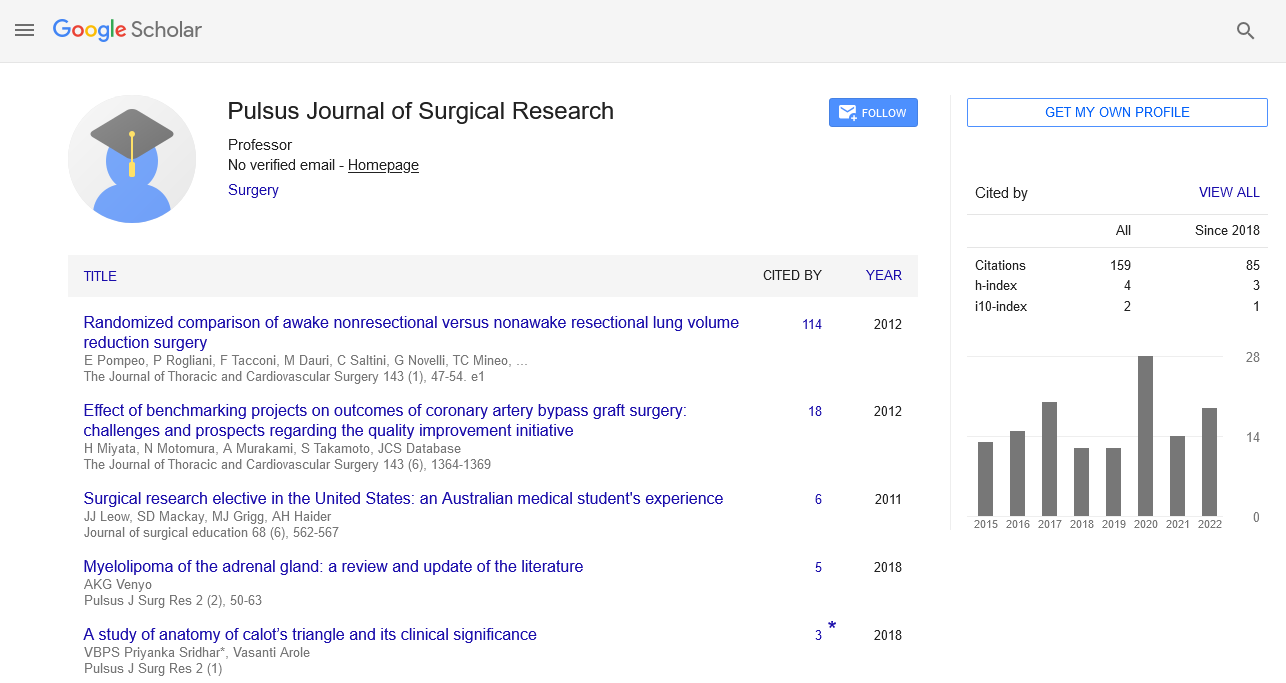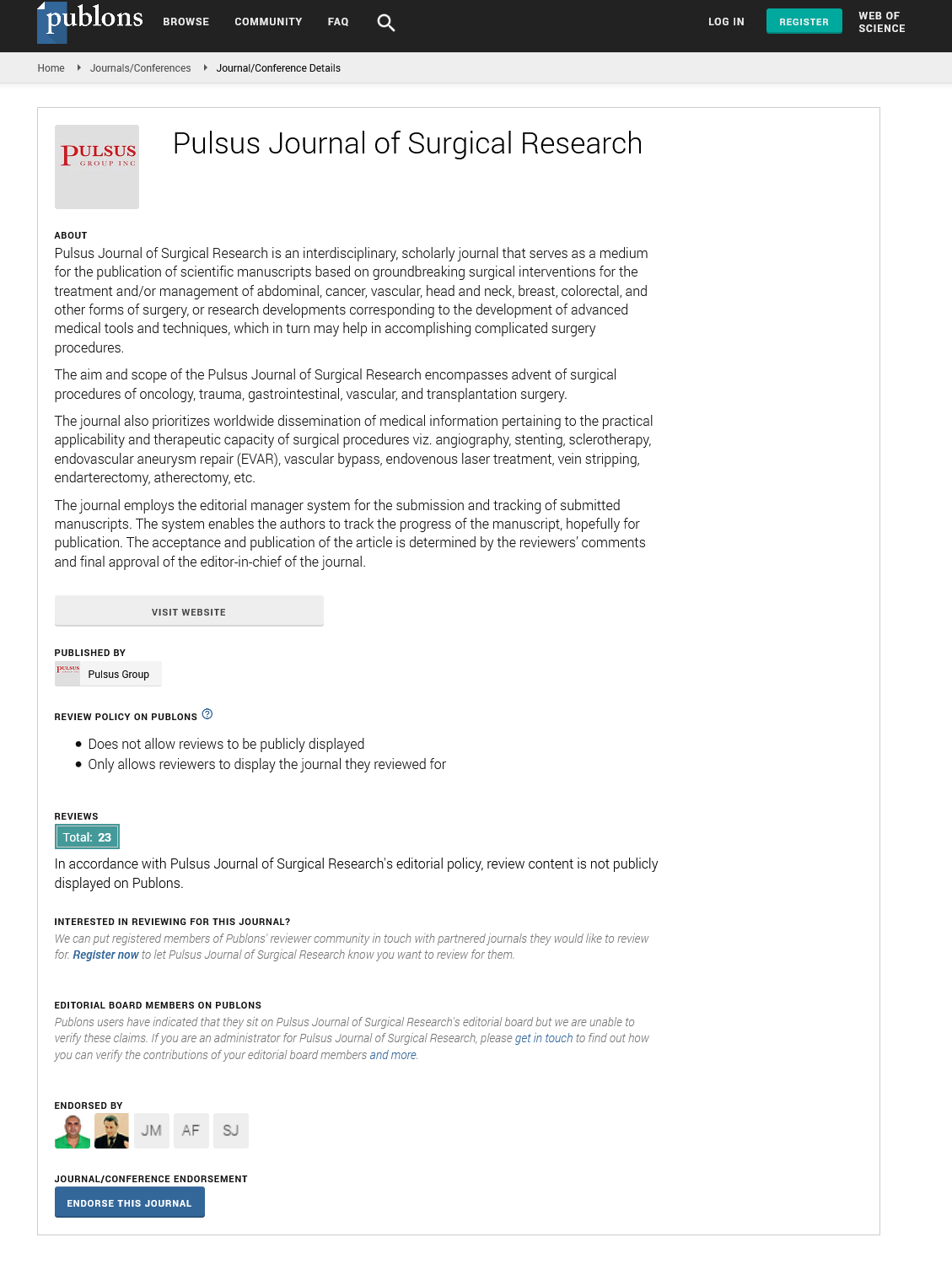
Sign up for email alert when new content gets added: Sign up
Traumatic spinal cord injuries: Prognostic indicators of neurological recovery
12th International Conference on Osteoporosis, Arthritis and Musculoskeletal Disorders
March 13-14, 2019, London, UK
Wagih El Masri
Keele University, UK
Keynote: Pulsus J Surg Res
Abstract :
The management of Traumatic Spinal Cord Injury (TSCI) has been controversial for the last two centuries. Better visualisation by CT and MRI together with improved instrumentation & increased safety of anaesthetic 35 years ago resulted in a change of practice from Active Physiological Conservative Management (APCM) of the spinal cord injury together with all its medical and non-medical effects to resources being directed to a focused surgical management of the injured spine with fragmentation of management of other effects of cord damage. This was based on the assumptions that surgical decompression and stabilisation will result in better neurological recovery, prevention of neurological deterioration, earlier mobilisation and completion of rehabilitation, shorter hospitalisation and reduced cost of management. unfortunately, those who advocate surgical intervention are basing the same principles of management to the neurologically intact and the neurologically impaired patient whose physiology is impaired, whose spinal cord is patho-physiologically unstable and who are at risk of neurological deterioration by surgery and by early mobilisation. Furthermore, to date there is no evidence that; neurological outcomes, duration of rehabilitation, period of hospitalisation or cost of management are improved by surgical intervention on the spine of patient with cord injury and the opposite is likely to be true. A Spinal Cord Injury (SCI) results in a multi-system impairment and malfunction, paralysis, sensory loss and a potential wide range of medical and non-medical complications. The injured spinal cord is physiologically unstable and can be further damaged by non-mechanical complications. Hypoxia, hypertension, hypotension, sepsis, hypothermia, fluid overload can easily occur causing more neurological damage. Patients require scrupulous simultaneous attention of all effects of paralysis to ensure; maximum neurological recovery, prevent complications including long term pain, achievement of maximum range of movement of the spine essential for independence in the wheelchair to minimise cost of support in the community, ensure safe and convenient functioning of all body systems, ensure long term maintenance of health to minimise readmission with complications and enable the patient to actively contribute to the society. The prognostic indicators of neurological recovery based on the initial sensory sparing without intervention will be demonstrated and discussed. The irrelevance of traumatic biomechanical instability, spinal canal encroachment and cord compression on prognosis of neurological recovery in patients with sensory sparing on presentation will be demonstrated. the possible disadvantages, complications and hazard of surgical stabilisation, surgical decompression and early mobilisation will be discussed. The outcomes of APCM will be demonstrated. The importance of future research with relevant outcomes to target will be highlighted.
Biography :
Wagih El Masri Prof W S El Masri FRCS Ed; FRCP Clinical Professor of Spinal Injuries - Keele University Consultant Spinal Injuries – Hunters Moor Neurorehabilitation Centre Birmingham Emeritus Consultant Surgeon in Spinal Injuries Robert Jones and Agnes Hunt Orth.Hospital Trained in the speciality of spinal injuries at Stoke Mandeville, Oxford, Guys Hospitals & the USA between 1971 and 1983. To date personally treated 10,000 patients with traumatic Spinal Injuries. Developed, and led the Midland Centre for Spinal Injuries (MCSI) between 1983 & 2014. Took responsibility for the management of the injured spine, the multisystem malfunction as well as the range of non-medical and physical effects of cord injury in the acute, subacute, rehabilitation phases as well as in the long term. Lectured worldwide in developed and developing countries. Contributed to the literature with over 135 publications. Documented the prognostic indicators of neurological recovery following Traumatic Spinal Cord Injuries. Demonstrated that with Active Physiological Conservative Management neurological recovery occurs irrespective of the degree of Biomechanical Instability, Canal encroachment or Cord Compression. Introduced the concept of “Physiological Instability of the Injured Spinal Cord” Peer reviewer and on the Editorial Boards of a number of Journals Held the offices of: President of the International Spinal Cord Society, Chairman of the British Association of Spinal Cord Injury Specialists, Executive Member of the BSRM . Founder Member and trustee of a number of charities that support Health Care professionals and patients. Raised about six million pounds from charity to rebuild and furnish the MCSI. Advisor to WHO ‘s International Perspectives on Spinal Cord Injury which was published in 2013 Member of the NICE Guideline Developing Group in spinal injuries. Obtained a number of awards including: the Medal of the International Spinal Cord Society, National Hospital Doctor Team Award for Innovation, Outstanding achievement award from the Chinese Society of Spinal Injuries, Outstanding Consultant Achievement award by the Spinal Injury Association, Hon. Presidency of the Romanian Spinal Cord Society, the Paul Harris Fellowship of the Rotary Club. The concepts, issues and facts demonstrated in this presentation can be revisited from a recent publication in the journal “Trauma”..
E-mail: bellstonehse@btinternet.com





